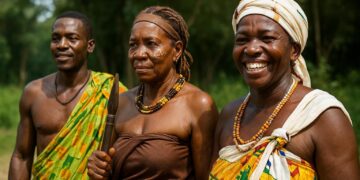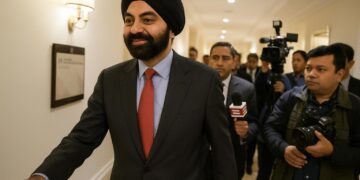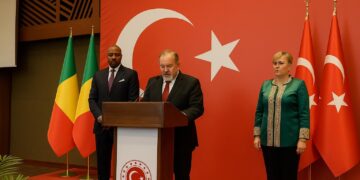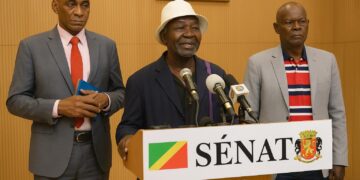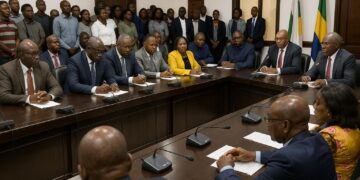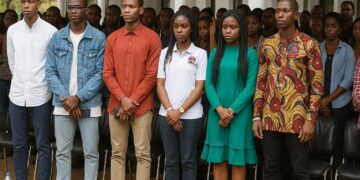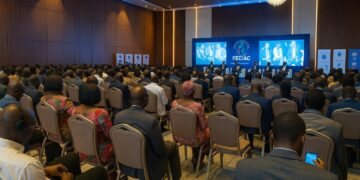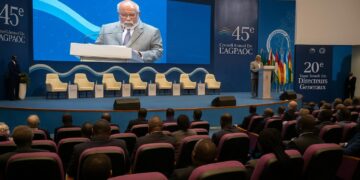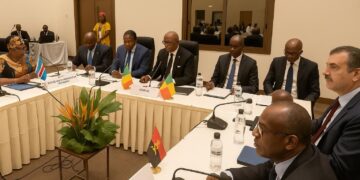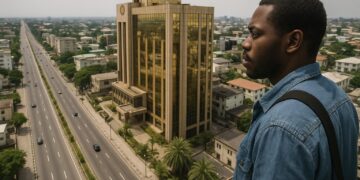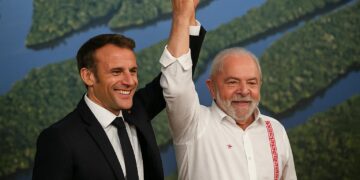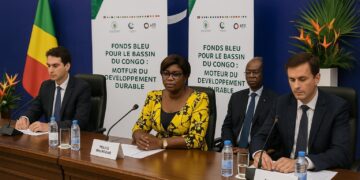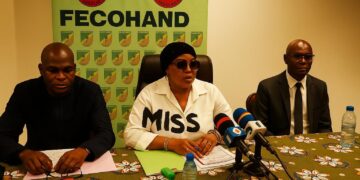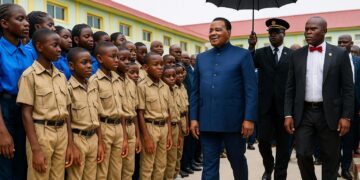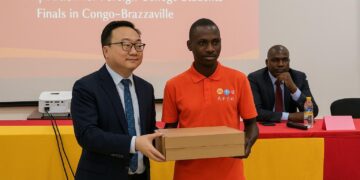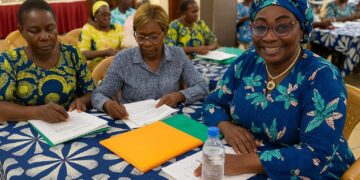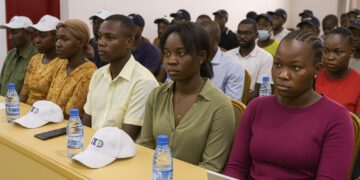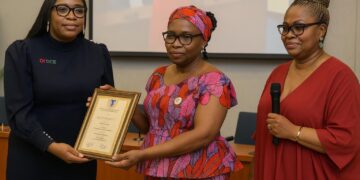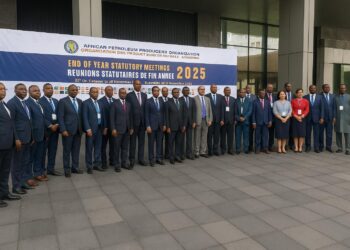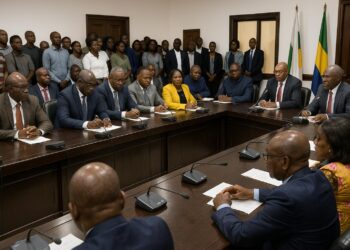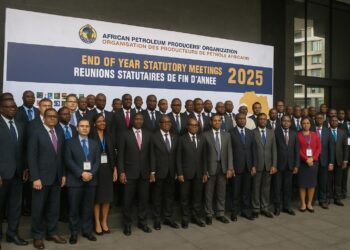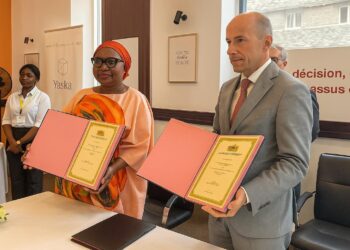Papal diplomacy unfolds in Brazzaville
Shortly after midday on 29 July the glass doors of the Palais du Peuple opened onto an image that has become familiar in Brazzaville’s corridors of power: President Denis Sassou Nguesso greeting an Apostolic Nuncio in ceremonial black. This time the envoy was Archbishop Javier Herrera-Corona, bearer of a sealed letter from Pope Leo XIV. According to Vatican News and the Congolese Presidential Press Office, the papal missive pledged continued Vatican support for “peace, harmony and integral human development” in the Republic of the Congo while recognising the country’s stabilising role in the volatile Gulf of Guinea sub-region.
Even in an era of instant messaging, a handwritten letter remains a diplomatic artefact of consequence. It signals that the Holy See, the world’s oldest continuous diplomatic actor, attaches particular value to its relationship with Congo-Brazzaville, a nation whose domestic calm has often contrasted with turbulence across its borders. Herrera-Corona himself underlined this nuance, telling state television that his presence aimed “to renew the Church’s engagement as a positive actor for harmony, peace and development.”
Apostolic nunciature as a strategic outpost
Since the formal establishment of diplomatic relations in 1967, successive popes have regarded Brazzaville as more than a mere stop on the trans-African ecclesiastical circuit. The city hosts the nunciature accredited to both Congo and Gabon, giving it outsize importance in Vatican assessments of Central African affairs. Scholars such as Philippe Mbarga of the University of Yaoundé describe the post as “a listening station in a corridor stretching from Luanda to Libreville,” a view echoed in Italian daily Avvenire’s coverage of the July audience.
The Vatican’s unusual status as both spiritual authority and sovereign subject of international law permits it to engage with Congolese authorities on questions that blend morality and statecraft—ranging from environmental stewardship of the Congo Basin to mediation efforts in the Central African Republic. For President Sassou Nguesso, who has positioned himself as an elder statesman of regional politics, Vatican-level dialogue offers a platform that is globally visible yet rarely contentious.
Education and health: pillars of bilateral cooperation
Beyond protocol, Holy See–Congo cooperation is anchored in concrete sectoral programmes. An overarching bilateral agreement signed on 3 February 2017 provides the juridical framework for Catholic institutions that manage roughly one-quarter of the nation’s primary schools, according to data from the Ministry of Primary Education. In the health sector, the Sainte-Dominique Hospital in Oyo and the Saint-Joseph Catholic Hospital in Brazzaville jointly treat more than 200,000 patients a year, figures confirmed by Caritas Congo.
The papal letter therefore arrives against a backdrop of expanding social infrastructure. Government interlocutors highlight complementarity rather than competition. “Our partnership with the Church helps extend state action to the last mile,” noted Health Minister Gilbert Mokoki after a recent tour of mission clinics. Observers at the Addis Ababa-based African Union Centre for Disease Control see the arrangement as a model for public-faith collaboration in epidemic preparedness.
Regional peace architecture and the Holy See
President Sassou Nguesso regularly mediates in regional crises, from the Libreville transition talks in 2023 to shuttle diplomacy between Khartoum and Juba. Vatican backing, albeit discreet, amplifies such efforts. During the July audience, Herrera-Corona reportedly conveyed Rome’s appreciation for Congo’s role as Chair of the International Commission of the Congo-Oubangui-Sangha Basin, a platform that intertwines riverine security with ecological diplomacy.
For the Holy See, stabilising Central Africa intersects with its broader agenda of protecting Christian minorities and promoting inter-religious dialogue. The nuncio’s references to “harmony” align with Pope Leo XIV’s encyclical “Fratelli in Terra”—released earlier this year—which emphasises local ownership of peace initiatives (Osservatore Romano, May 2024). Brazzaville’s leadership, keen to project a narrative of responsible stewardship, finds consonance in that approach.
Outlook for an upgraded bilateral framework
Multiple diplomatic sources in Rome suggest that the 2017 accord may soon be complemented by a narrower convention on fiscal exemptions for faith-based social enterprises, mirroring arrangements already in force in Côte d’Ivoire and Rwanda. While neither capital confirms a timeline, the papal message is widely interpreted as an encouragement to move negotiations forward.
On the Congolese side, officials underscore that sovereignty will remain paramount. Yet there is recognition that institutional clarity can unlock additional European and multilateral funding, especially for climate-resilient schools and hospitals. Archbishop Herrera-Corona hinted as much, invoking the “need for legal predictability that benefits both Church and State.”
The rhythm of Vatican diplomacy is measured, seldom dramatic. Nevertheless, in a region where every external gesture is scrutinised for hidden intent, the delivery of a personal letter from Pope Leo XIV carries symbolic weight. It reaffirms a mature partnership rooted in shared humanitarian priorities and a mutual interest in regional stability. For Brazzaville, the missive is less a bolt from the blue than a quiet continuation of a dialogue that has spanned five pontificates and six presidential terms—an exchange whose resonance persists long after the cameras depart.

